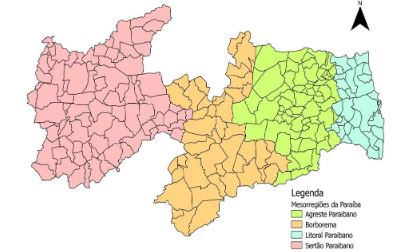Analysis of the population of equidae in semiarid region of Paraíba
DOI:
https://doi.org/10.20873/jbb.uft.cemaf.v4n3.sallesKeywords:
population size, horses, donkeys, mulesAbstract
The species of equines of the Brazilian Northeast represent primarily to those local populations of horses, donkeys and mules, which are adapted to the semiarid region and developed a key role in shaping social and historical life of the region. The Brazil has the third largest population in the world, especially in the Northeast. The aim of this study was to analyze the situation of the population of major species of equines (horses, donkeys and mules) and analise their population dynamics in a defined time period of the last decade ( 2004 to 2010). The study took into account the actual numbers of horses, donkeys and mules in the semiarid region covered by the state of Paraíba. Results show that equine populations suffered an decrease over a time period of six years. The loss was great est in the back lands and less strong in the central part of Paraíba and the donkeys suffered the largest reduction.The analysis of the situation of the population of equines that were important for the region showed a negative balance comparing population sizes between 2004 and 2010. The present study represents a basis for the development of conservation programs of equines species.
References
ALMEIDA, F. Q.; SILVA, V. P. Progresso Científico em Equideocultura na 1ª Década do Século XXI. Revista Brasileira de Zootecnia, v. 39, p. 119-129, 2010.
ALMEIDA, L. D. Diversidade Genética de Raças Asininas Criadas no Brasil, Baseada na Análise de Locos Microssatélites e DNA Mitocrondial. 2009. Dissertação (Mestrado em Ciências Animais) – Faculdade de Agronomia e Medicina Veterinária, Universidade de Brasília, Brasília, 2009.
BRASIL. Ministério da Agricultura. Disponível em: <http://www.agricultura.gov.br> Acesso em: 10 de agosto 2012.
DETRAN. Evolução veículos. Acessos: 14804/01/2013 Disponível em: http://www.detran.pb.gov.br/index.php/estatisticas.html
EGITO, A. A.; et al. The Brazilian Genetic Resources Conservation Programm. Archivos de Zootecnia, v. 51, p. 39-52, 2002.
Food and Agriculture Organization (FAO). Situação Mundial dos Recursos Genéticos Animais para Agricultura e Alimentação. Versão Resumida. Brasília: FAO (Embrapa), 2010.
LIMA, R. A. de S. Evolução da Tropa de Equinos e sua Correlação com o Rebanho de Bovinos no Brasil. Londrina: SBEASR, 2007, p. 3.
LIMA, R. A. de S.; et al. Estudo do Complexo do Agronegócio Cavalo. Piracicaba: ESALQ/USP, 2006.
MATTOS, P. de; et al. O Perfil Empreendedor do Criador de Cavalo Crioulo no Estado do Rio Grande do Sul. Campo Grande: SOBER, 2009.
MELO, J. B.; et al. Zoometric Study of Nordestino Horse Breed From Floresta City in Pernambuco State (Brazil). AICA 1: 71-74, 2011.
SANTOS, A. S.; et al. Descrição do Manejo Geral de Cavalos Pantaneiros na Região do Pantanal. Corumbá: Embrapa, 2005.

Published
How to Cite
Issue
Section
License
Copyright (c) 2024 - Journal of Biotechnology and Biodiversity

This work is licensed under a Creative Commons Attribution 4.0 International License.
Authors who publish with this journal agree to the following terms:
Authors retain copyright and grant the journal right of first publication with the work simultaneously licensed under a Creative Commons Attribution License (CC BY 4.0 at http://creativecommons.org/licenses/by/4.0/) that allows others to share the work with an acknowledgement of the work's authorship and initial publication in this journal.
Authors are able to enter into separate, additional contractual arrangements for the non-exclusive distribution of the journal's published version of the work (e.g., post it to an institutional repository or publish it in a book), with an acknowledgement of its initial publication in this journal.
Authors are permitted and encouraged to post their work online (e.g. in institutional repositories or on their website) prior to and during the submission process, as it can lead to productive exchanges, as well as earlier and greater citation of published work (Available at The Effect of Open Access, at http://opcit.eprints.org/oacitation-biblio.html).


